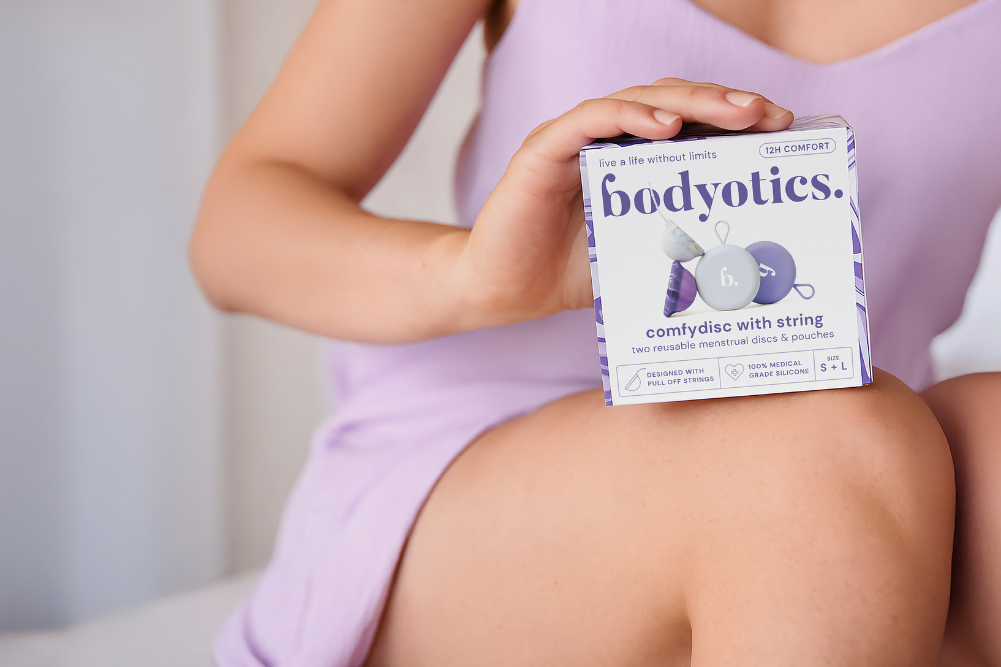How hellerwork can help your body, heart and mind
Want to know the secret of all-round good health and wellbeing? If only there was a simple formula: take one life, an ounce of compassion and plenty of exercise and then stir vigorously with the agitations of life. In reality, however, every one of us has an innate wisdom in our body, mind and heart. Hellerwork, a relatively new therapy to Australia, can enable you to tap into that natural state of health.
What is Hellerwork?
Hellerwork is a bodywork technique derived from Rolfing that combines three key elements — deep-tissue massage, movement education and dialogue — to realign the body and therefore facilitate optimum health.
“It treats the client as a whole organism, not just a body on a table,†says Sydney-based Hellerwork practitioner Max Walker. “It includes your emotional life and all your old habits and attitudes, the way you move, how you feel about yourself and your life. It’s a very full experience compared with purely physical therapy.â€
Hellerwork is designed to be experienced as a series of 11 90-minute sessions that work on progressively deeper layers of connective tissue around the muscles, but even one session can give you a sense of what it’s about, and some practitioners will tailor the series to suit the individual’s needs.
In the beginning
Hellerwork was developed by Joseph Heller (not the author of Catch-22!), a Polish-born aerospace engineer who worked for NASA during the heady days of early space exploration in the 1960s and ’70s.
In 1972, Heller went to a Rolfing seminar led by Dr Ida Rolf and volunteered to be her demonstration model. He felt so changed by the experience that he decided to give up engineering to become a Rolfing practitioner. He was later appointed the first president of the Rolf Institute, the organisation that oversees the training of Rolfing practitioners in the United States.
Throughout the ’70s Heller worked with leading figures in the humanistic health movement, including Judith Aston, founder of Aston-Patterning; Hal Stone, who developed the concept of Voice Dialogue; and W Brugh Joy MD, who is known for his work on the healing effects of energy fields, meditation and higher states of consciousness. All this influenced Heller, and in 1978, after noticing that many of his Rolfing clients seemed to be returning again and again with the same problems, he left the Rolf Institute and developed Hellerwork: a new system of bodywork that went beyond Rolfing’s 10-session format.
Hellerwork is now one of a stable of structural and functional integration techniques — including Rolfing, the Alexander Technique and the Feldenkrais Method — that aims to optimise postural awareness through treating each client as a whole person, not just a collection of symptoms.
Although it was devised more than 25 years ago and is widely known in the US, Hellerwork is only now gaining popularity in Australia. Last year, the first class of Australian-trained Hellerwork practitioners completed their two-year training. More and more people are appreciating Hellerwork’s benefits, which include relief from chronic pain, headaches, respiratory conditions, sports injuries and carpal tunnel syndrome; increased energy, flexibility and vitality; the ability to move more freely; and increased mindfulness in one’s daily life.
How does it work?
The basic biological principle underlying Hellerwork is that everything in your body — organ, muscle and bone — is wrapped in a fine membrane of connective tissue. Tension or stress causes the connective tissue (fascia), which “cling-wraps†each muscle, to shorten, become less elastic and even stick together. Those areas of the body then become rigid and unable to move efficiently and freely.
Because everyone experiences stress to a certain degree, Hellerwork is suitable for anyone who is looking for greater ease and balance in his or her life. However, those who experience the greatest benefits are often people who have chronic conditions and have “tried everythingâ€.
The deep-tissue massage in Hellerwork aims to release tension by ungluing and lengthening the fascia, which in turn allows other parts of the body to return to their natural alignment. Imagine wearing a lycra bodystocking. When you pull on one part of the bodystocking (the fascia), all the other parts move to compensate; it works as an integrated system.
The Hellerwork practitioner applies slow, firm strokes to each area of your body, starting with the superficial layers of fascia in the early sessions and moving to deeper layers in the later sessions. As Walker explains: “There’s something about the speed of the strokes that are used — you’re really leaning into the connective tissue and waiting for it to let you through, waiting for it to change ahead of your hands.â€
It certainly feels different to a conventional massage. During my first session I was struck by two strong impressions: it didn’t feel like a massage — it felt deeper, as if the practitioner was bypassing the skin and going straight to the muscles — and some movements were quite painful, like a slow graze.
No pain, no gain
There’s no getting around the pain. Because the bodywork is so deep (often releasing long-held areas of tension in the body), Hellerwork can cause varying amounts of pain. This depends, of course, on your pain threshold, how much tension there is in your body’s connective tissue and how much pressure is applied.
The good news is that you can control the amount of pain you experience, as German Hellerwork practitioner and trainer Katrin Sievers-Weiss explains: “Pain is a part of Hellerwork because the fascia stick together and they don’t just unglue because you tell them to; you have to go in there and free them up. So it is a little painful, but it’s like when you go for a run and the next day you experience sore muscles; it’s just a chemical process that happens. It’s less painful when you keep drinking lots of fluids and the client has some control — they can move into my hands instead of me moving into them, so they can open up in their own time.â€
Walking the walk
Bodywork is only one part of the Hellerwork method. If the work stopped there, chances are your body would fall back into long-held patterns of tension and maladjustment. So Hellerwork includes a movement component in each session, usually after the bodywork, to break old postural habits that create tension and to re-educate the body to move more freely. It also increases your awareness of how you move so you can carry the treatment out of the therapy room and into your daily life.
Under the practitioner’s guidance, you practise simple actions like walking, getting up from a chair, bending down or sitting. Then you modify them slightly and practise the new movements at home (a kind of “homeworkâ€). It’s not a series of exercises that you’re told to do once or twice a day but an invitation to tune in to your body between sessions so that you can begin to take more responsibility for your own wellbeing. In any case, because your body generally feels freer after a session, it can be a pleasure to try out new ways of walking or sitting; it’s as if you’re learning how to use your body all over again.
The movement exercises also make the lessons learned during a Hellerwork session more memorable because you’re experiencing them on a physical rather than intellectual level. At the end of the session that worked on my abdominal muscles, my practitioner asked me to stand up and “go into my head†(an easy assignment, as it’s what I’ve been habitually doing for years). Then he gently pushed me by the shoulders so that I lost my balance; I had to move my feet to stop myself from falling back. He then told me to ground myself in my belly. I thought I knew what was coming: I wouldn’t be pushed over so easily this time. To my surprise, I still fell back. But something else happened, too: my body gently returned itself to the upright position like a tree in the wind. It made me realise how “being in my head†often makes me vulnerable and how easy it can be to find some groundedness within my own body.
“The movement work can be very empowering,†says Walker. “You’re essentially giving people new options for how they use their body and ways of keeping them connected and embodied so that on some level they can continue to do the work themselves. And you’re encouraging them to notice how their body feels when they do certain things: how they hold themselves in particular situations, like when they’re under emotional stress. The more you practise that, the more it becomes second nature.â€
“I’d spent years going to osteopaths for my chronic back pain,†says psychotherapist and Hellerwork client Liz Turnbull. “But since the Hellerwork I have much less pain now and the pain I do have is more manageable; there’s a sense of being able to manage it through what I’ve learned about how I hold my body and my posture. I think it has also relieved my anxiety about the pain. Before, I would go to an osteopath and they would fix the problem for me, but with Hellerwork it’s as if I’ve entered into the problem from the inside, which gives me a sense of empowerment. It’s within my power to do something about the pain now.â€
Another rather unique (and optional) aspect of Hellerwork that facilitates this renewed awareness and gives the client visual clues about their posture involves being photographed standing front, back and side-on. Because the photos are taken at the beginning and end of specific sessions, there’s an opportunity to actually see as well as feel the changes that are taking place.
Sydney-based writer Gabrielle Lord has seen (and felt) this first-hand. After three months of Hellerwork treatments, she has noticed major changes. “With the Hellerwork, my scoliosis has softened and I can see a noticeable change in my back,†says Lord. “My partner, too, has remarked on it. But the best thing is a lovely sense of ‘uplift’ in the shoulder/neck complex, a sense of freedom and ease that I enjoy when I walk.â€
The spoken word
This brings us to Hellerwork’s most radical element: dialogue. “The reason dialogue is in there is to acknowledge the link between the emotional and the physical, and to give people a space in which they can explore that relationship,†says Walker.
There are two ways in which dialogue comes into the sessions. First, each session has a theme that relates to the part of the body being worked on in that session, allowing both client and therapist to contact psychological issues relevant to that part of the body. For example, the theme of the first session, which works on the chest and breathing, is “Inspirationâ€, so you’re encouraged to think and talk about what inspires you and where you draw inspiration from in your life. Other themes include “Standing on Your Own Two Feet†(feet and legs), “Reaching Out†(arms and shoulders) and “Control and Surrender†(pelvic floor and inner thighs).
It might sound far-fetched at first, but having a theme seems to provide a frame of reference for the session. It also gives you permission to tune in to the attitudes you have about yourself, your life and the world, and to examine how your body reflects those attitudes.
The second aspect of dialogue involves the client talking about any thoughts, images, feelings, sensations or attitudes that come up during the bodywork. For me, this is one of the most powerful aspects of Hellerwork. So many therapies encourage you to tune out, talk about something else, analyse your life and relationships or even go to sleep while the therapist works on your body — all of which keep you separate from what you’re actually experiencing. Hellerwork encourages you to stay right where you are, with your body sensations, with the emotions or attitudes that might be coming up, with the experience. It can be challenging and it may not be for everyone, but it can also be incredibly liberating to take part in your own healing and to be part of the process.
Connecting body and mind
By bringing the elements of bodywork, movement education and dialogue together, Hellerwork involves your entire being in the process of healing.
Sievers-Weiss sums up how the three elements work together: “It’s like a toolbox. If you only have a hammer, everything looks like a nail. Hellerwork is really holistic. First, it involves listening to the body. If you say you have back pain, the practitioner wouldn’t just start working on your back, because the pain might be related to your ankle, viscera or cervical spine. So it’s about finding out what’s causing the problem, relieving that and then allowing the structure to realign itself again — because it has been organised around this dysfunction.
“Second, it creates awareness from a psychological point of view. If you’re depressed and you sit around hunched forward, it doesn’t matter how much massage you get; if you’re still depressed, you won’t open up in the chest area. You have to look into why you are depressed and what that does to your body.
“Third, Hellerwork also creates awareness from a movement point of view. During our last training, we had a boy who was limping. No matter what we did, he kept limping. Then one day his father came instead of his mother to pick him up, and his father was limping. So, as it turned out, the boy was just mimicking his father; the cause of his limp was a desire to be like his dad!â€
There is also space to explore the effects of injury or trauma on the body and mind. Walker experienced this first-hand as a Hellerwork client: when he was six weeks old, he had surgery on the pyloric sphincter in the solar plexus. It wasn’t until he had his first Hellerwork session when he was in his 30s that he realised how something that had happened so long ago could affect his body and his life.
“It was the first time the operation I had as a baby was acknowledged and recognised as something that contributed to my overall structure,†he says. “I realised that my whole body was organised around protecting my stomach; my shoulders were rolled forward and down, my chest was very collapsed, there was also a real tension on the tissue in that area around the scar. So even though you’re unconscious when you have an operation like that, the body remembers and it can be very traumatising. The Hellerwork I had on that area not only allowed me to stand upright, it also made me more engaged with the world, more connected with what was going on around me.â€
Mindful massage
The real healing power of Hellerwork comes from its acceptance of whatever the client brings to each session. Despite applying themes and concentrating on specific areas of the body in each session, Hellerwork practitioners are trained to bring a genuine openness to each session and to be flexible to the client’s needs, whether they are physical or emotional. It’s like applying meditation practice to health care: mindfulness to massage.
In this way, Hellerwork really reconnects us to our bodies. As Max Walker says: “One of the most widespread problems in our culture is a kind of disembodiment, the overemphasis on rational thought and intellectualism. A lot of people are reasonably sophisticated these days when it comes to the idea of a connection between the physical and the emotional, but it’s surprising how few actually apply it in their own lives. So having a process that allows you to reconnect your body, to drop down into it, can be really powerful and profound.â€
That’s the beauty of Hellerwork: it doesn’t impose rigid ideas of how you or your body should be. It works with what you bring to the session and reveals your body’s own natural wisdom, which is there in all of us. If only we can be still long enough to listen.
For more information about Hellerwork, go to www.hellerwork.com. To find qualified Hellerwork practitioners in Australia, go to www.hellerwork.com.au







